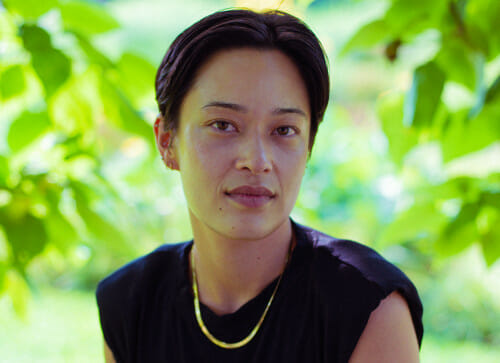Sabrina Imbler to visit campus as spring science journalist in residence

Sabrina Imbler has written about a mother octopus who spent 53-months brooding on her eggs, a transitional fish fossil the internet wishes had stayed in the water and a clutch of eggs that helped solve a century-old leaf insect mystery. Imbler, a chapter book author and science journalist, is fascinated by weird, wonderful creatures, and this spring, as the Sharon Dunwoody Science Journalist in Residence, Imbler will bring their passion and fascination to the University of Wisconsin–Madison.
From March 29-31, Imbler (who uses they/them pronouns) will be on campus visiting classrooms to engage with students, meet with researchers on campus and participate in a public panel discussion.
The panel, entitled “Wonder, Weirdness and Writing about Animals,” will take place March 30 from 6:30-8 p.m. in the Bea Christensen room of the Goodman Community Center, located at 214 Waubesa Street in Madison. A virtual option is also available via Facebook Live at this link.
Imbler will be joined in conversation by Stacy Forster, a School of Journalism and Mass Communication teaching faculty member with more than a decade of reporting experience, and Mary Magnuson, a graduate student and former American Association for the Advancement of Science Mass Media Fellow, who studies urban canids like coyotes and foxes.
The panelists will discuss why humans are drawn to studying and reading about animals, approaches to writing about animals, how narrative is used to strengthen science journalism and many of the discoveries and behind-the-scenes stories behind studying and covering creatures.
Imbler’s work may have caught your attention back in 2021 thanks to this catchy New York Times headline, “When an Eel Climbs a Ramp to Eat Squid From a Clamp, That’s a Moray.” Or maybe you’ve read their latest book, “How Far the Light Reaches: A Life in Ten Sea Creatures,” which weaves the wonders of marine biology with Imbler’s own personal reflections. Whether they’re sharing a new scientific study or expanding into a narrative essay, Imbler’s unique voice and knack for connecting weird animals to the human experience hooks readers.
Imbler is currently a staff writer at Defector, an employee-owned sports and culture website, where they cover the creature beat. Previously, Imbler has written for The New York Times as a reporting fellow on the science and health desk and for The Atlantic.
The UW–Madison Science Journalist in Residence program was founded in 1986 and is hosted by the School of Journalism and Mass Communication and University Communications. It is now part of the Sharon Dunwoody Journalist in Residence program at UW–Madison. The late Dunwoody, a professor of journalism at UW–Madison, co-founded the Science Journalist in Residence program with emeritus Director of Research Communications, Terry Devitt.
The program has hosted national science writers nearly every semester, in-person and virtually, including Radiolab’s Latif Nasser, Scientific American’s editor in chief Laura Helmuth, biologist-turned-science journalist Michelle Nijhuis and Pulitzer Prize-winning Atlantic reporter Ed Yong.



